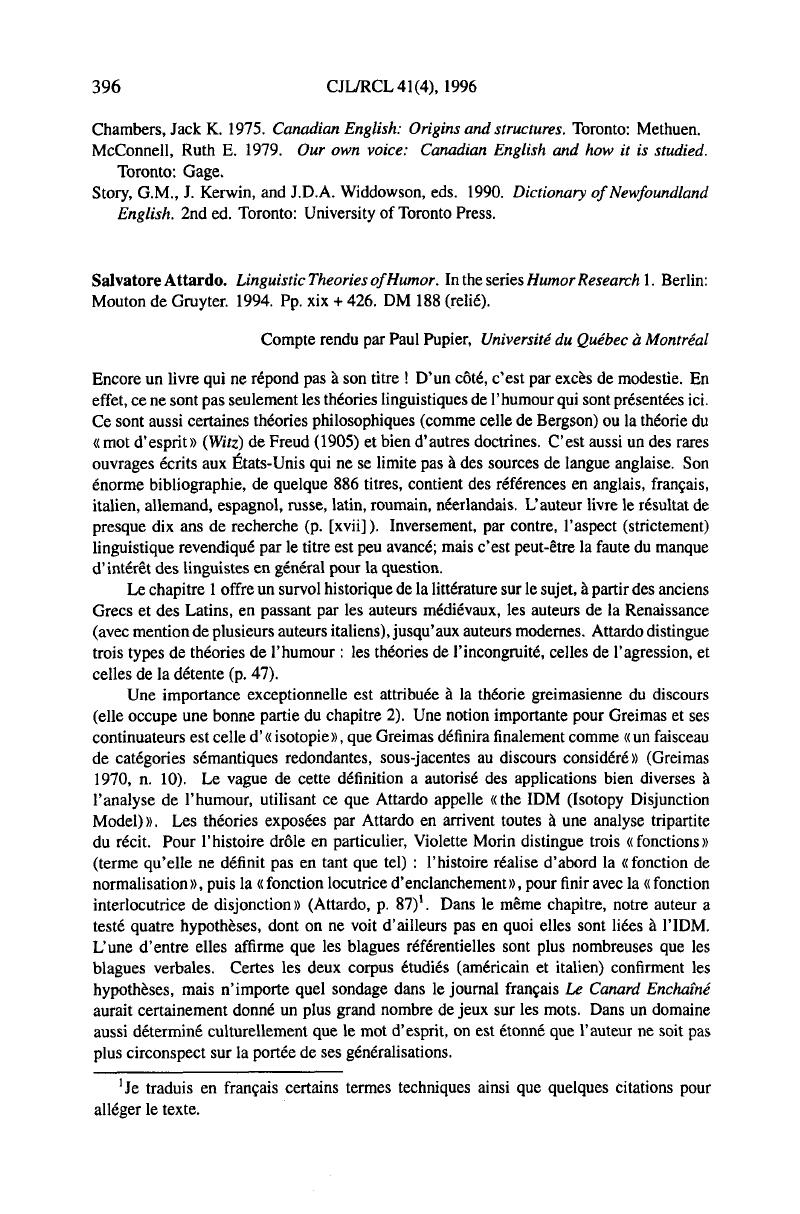No CrossRef data available.
Article contents
Salvatore Attardo. Linguistic Theories of Humor. In the series Humor Research 1. Berlin: Mouton de Gruyter. 1994. Pp. xix + 426. DM 188 (relié).
Published online by Cambridge University Press: 27 June 2016
Abstract
An abstract is not available for this content so a preview has been provided. Please use the Get access link above for information on how to access this content.

- Type
- Reviews/Comptes rendus
- Information
- Canadian Journal of Linguistics/Revue canadienne de linguistique , Volume 41 , Issue 4 , December 1996 , pp. 396 - 399
- Copyright
- Copyright © Canadian Linguistic Association 1996
References
Références
Bergson, Henri. 1970. Oeuvres. Paris: Presses Universitaires de France [contient Le Rire. Essai sur la signification du comique (1900)].Google Scholar
Bergson, Henri. 1911. Laughter. An essay on the meaning of the comic. New York : Macmillan [trad, de Bergson 1900].Google Scholar
Brown, Roger, et McNeill, David. 1966. The “tip of the tongue” phenomenon. Journal of Verbal Learning and Verbal Behavior
5:325–337.Google Scholar
Legman, G.
1968. Rationale of the dirty joke. An analysis of sexual humor. New York : Grove Press.Google Scholar
Legman, G.
1982. No laughing matter: An analysis of sexual humor. Bloomington : Indiana University Press.Google Scholar
Vittoz-Canuto, M.-B.
1983. Si vous avez votre jeu de mots à dire. Analyse des jeux de mots dans la publicité. Paris : Nizet.Google Scholar


